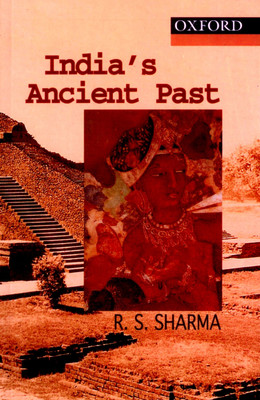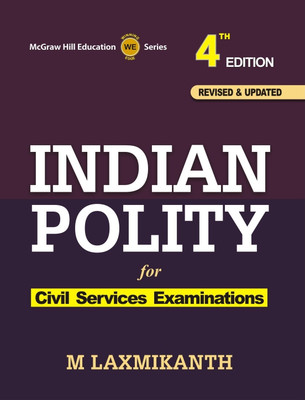Last updated January 2014
CLICK HERE to view the books listed on this page in a lowest-price-comparison format. This will save your time researching online. The new CSAT Prelims syllabus from 2011 onwards focuses on the basics, logical analysis, and requires candidates to be well versed with the fundamentals rather than focussing solely on current affairs to see them through the IAS Prelims. Keeping this in mind I’ve listed the relevant books for IAS CSAT Prelims so you make optimal use of available time with the most recommended IAS books for Prelims CSAT.
Note: All the books for IAS mentioned on this page have been tried by me or highly recommended by fellow aspirants. Also I am constantly adding books to cover the entire syllabus gradually so keep visiting this page often. This page contains links to pages where you can purchase the books online. Wherever possible I have listed the current and previous year’s edition of current affairs related books.
Books for IAS CSAT Paper 1
Before reading any other books get the past 5 years Solved Section-wise Solved Papers Papers and IAS Syllabus as these are your best friends and constant companions throughout your IAS exam journey. These two reference books will save a lot of valuable time and effort as you start preparing for the Prelims so be sure to get the solved section-wise questions papers and the IAS syllabus.
General Studies Manual (GS Manual)
When starting out with prelims preparation it is a must to have a GS manual with you. What is a GS manual? Well it is a all-in-one book for civil services prelims covering all the topics like History, Geography, Polity, Economy, Current Affairs, General Knowledge, Mental Ability, Facts, and more. It is very useful for finding all information at one place. Also many times the standard books do not contain information, especially the latest ones. For this the GS manual is very handy. There are many GS manual available in the market but I recommend Tata McGraw Hill’s (TMH) GS Manual for prelims. Read my comprehensive review of TMH GS and CSAT Manuals. I think the information provided in TMH GS manual is up-to date, relevant and of high quality. Also the maps in the Geography section are very good for understanding the concepts. Language used is simple to grasp and its General Knowledge section is quite good. Good part is some discounts on the cover price are available.
Manorama Year Book
A good Year Book is must for IAS Prelims preparation. If you analyze the past 4 years GS papers you will find that minimum 15 question each year have appeared from General Knowledge based Year Books. I and many successful civil services candidates refer to Manorama Year Book. The best sections in MYB are the World profile with information on all countries, recent happenings. The Gk section is exceptional with many facts, data, recent news, awards, etc Other thing to read in MYB is the 500 or so Questions section. I have noticed that even if you just look at those questions in passing you will be benefited greatly in the Prelims as 3-4 questions come from just this section in the IAS Prelims. Discount on the cover price is also available.
IAS Book for Indian Polity
As seasoned civil services aspirants are aware there are three books widely referred for Indian Polity, An Introduction to the Constitution of India by DD Basu, Our Constitution by Subhash Kashyap, and India’s Constitution by MV Pylee. Of the three books I always recommend Our Constitution by Subhash Kashyap as the language used is very simple to grasp even by someone who is studying Indian polity for the first time, it covers all the concepts required to gain a mastery of the syllabus. After reading and understanding this book you will only be required to stay up-to-date with the latest developments in Indian polity.
The book will take care of all the conventional questions like How has the SC interpreted Article 21 (Right to Life and Liberty), Relative power of LS Speaker and RS Chairman, Anti-Defection Law and many more. While DD Basu’s book is also OK, the language used is quite difficult to understand and the book has not been revised so it does not contain the recent amendments. Another book to refer for Bare Acts of the Indian Constitution is Indian Constitution by PM Bakshi . This pocket-sized book lists just the articles along with all the amendment to the constitution and is very useful for Prelims as UPSC has started asking questions directly from the bare articles.
IAS CSAT Books for Indian History
Indian History consisting of Ancient History, Medieval and Modern History is another important component of CSAT paper 1 and quite scoring too. Of these three sub topics the most number of questions are asked from the modern History part and the best book to tackle it is Bipin Chandra’s India’s Struggle for Independence. This book starts from the 1857 Revolt and continues right till the independence period. India’s Struggle is important not just from the prelims perspective but is a must read book to secure 40-80 marks in GS Mains paper as well. Another good reference book for Modern History is Brief History of Modern India by Spectrum. The book is quite useful for quick revision before the Prelims.
Also refer NCERT text books on Ancient, Medieval and Modern India. For Ancient and Medieval Indian History, only NCERT text-books are sufficient but for Modern Indian history, the books listed are a must-read along with NCERT Modern India History text book.
Note: Refer this post for alternatives to old syllabus history NCERTs
Geography CSAT Books for IAS
Nowadays more map-related questions are being asked in the IAS Preliminary exams than conventional type questions. In fact such map based questions are highly scoring if you just scan and observe the Indian and World maps for at least 15 minutes every day. You can then easily score 6-10 marks in the CSAT exam as about 6-10 questions are asked every year in the civil services Prelims from the Geography Atlas. From my experience and that of other successful civil services candidates, I recommend the Oxford Student Atlas for GS Geography questions. The Indian and World maps are quite detailed and the Physical and political maps are very easy to understand. If you need help in studying the Oxford Atlas, just leave a comment and I will be glad to help.
Another book to read is Certificate Course in Physical Geography by Goh Cheng Leong to tackle questions related to physical geography. Whether it’s Climate, Earthquakes, Winds, or Oceans everything is covered in this book on Physical Geography.
Indian Economy Books for CSAT
Economy questions asked in the Prelims are a combination of facts and theory. For tackling the factual questions refer to the Economic Survey released by the Information Ministry before the Budget presentation every year. It contains a wealth of information on Indian economy including in-depth tables and figures in the second half of the book. Economic Survey is also a must read for GS Mains as some questions are directly asked from it. Earlier I used to recommend the bulky Dutt and Sundharam Indian Economy book for basics. But this book has gone out of print and also, it is now outdated with lot of redundant information.
In its place, I recommend TMH Indian Economy by Ramesh Singh. It covers pretty much the entire scope of Economy syllabus for Prelims. Starting from a brief history of Indian Economy and the uniqueness of the Indian economic system it covers all the relevant sub-sectors of Indian economy like Planning, Industrialization and Policy, Agriculture, Economic Reforms, Inflation, Banking and Capital Market, External Trade and so on. The syllabus coverage in Indian Economy is complete, language is reader-friendly and book is updated frequently. Combine it with Economic Survey to ace Economy questions in Prelims.
Science Books for IAS
The TMH GS Manual has a pretty good Science section and is adequate for to tackle science related questions. However if you want you can complement it with NCERT textbooks of class IX and X.
Books for IAS CSAT Paper 2
Earlier I used to recommend three different books for Prelims paper 2 (CSAT). Not any longer. Now I recommend the very well written and accurate TMH CSAT Manual for Paper 2. Please go through my review of TMH Manuals to get an idea of why the TMH CSAT Manual is the only book you need to refer for Paper 2. Save time and money by referring one comprehensive book.
CLICK HERE to view the books listed on this page in a lowest-price-comparison format. This will save your time researching online.
Register as a member and get access to 3 courses - Test Series course with more than 5000 questions, Current Affairs course and GK course. Plus a free eBook. Also you get excellent support.
The post Recommended Books for IAS Prelims (CSAT) appeared first on IAS Kracker.
 In
In 






